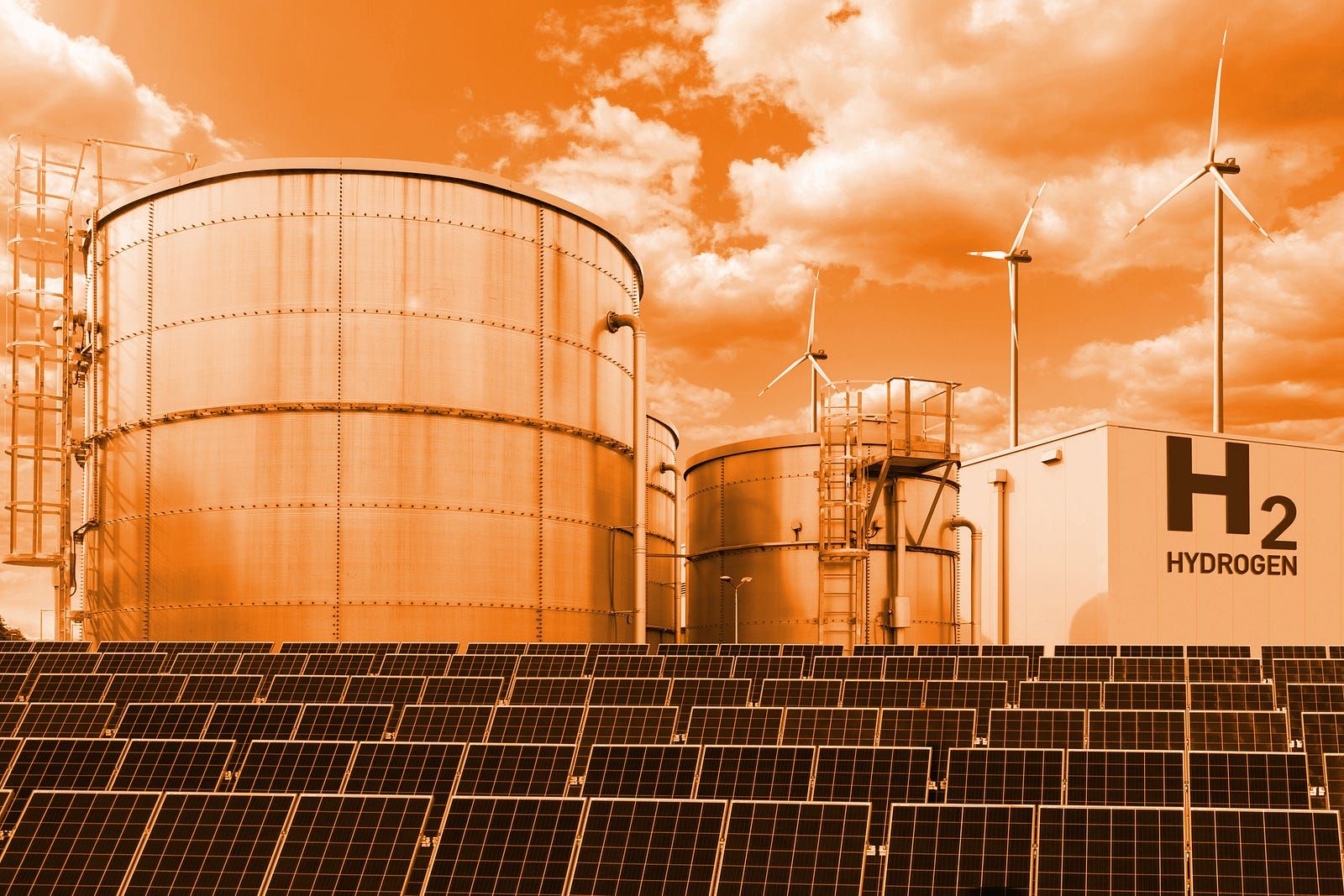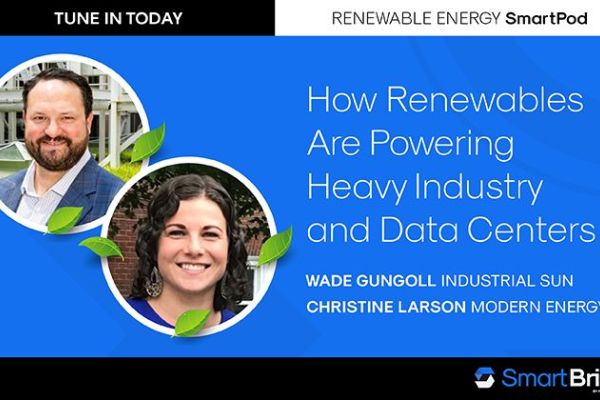Making Green Hydrogen Dreams a Reality with Industrial Solar
Insights
Jun 28, 2023
Written by Wade Gungoll

Hydrogen is an immense global market that’s quickly getting bigger, en route to a forecasted trillion-dollar-plus annual market size. Global hydrogen production currently satisfies three percent of global final energy demand — similar to the annual energy consumption of Germany — averaging 75 million metric tons per year of pure hydrogen, plus another 45 million metric tons per year as part of mixed gasses.
But the future promise of hydrogen also faces a significant challenge, especially in the era of decarbonization and net-zero ambitions. While consuming hydrogen — such as in a hydrogen fuel cell vehicle — only produces water as a byproduct, the process of creating that hydrogen in the first place can have a substantial carbon footprint.
The staggering truth is that 96% of the current hydrogen production is grey hydrogen, which emits all greenhouse gasses produced directly into the atmosphere. Grey hydrogen production relies on fossil fuel feedstocks (especially methane via steam methane reforming processes) and results in a hefty emissions toll of ~9 kg of CO2 emissions per 1 kg of hydrogen produced.
Yet amidst the hydrogen rainbow, there’s also the much-heralded green hydrogen — produced by splitting water (rather than fossil fuels) in renewably-powered electrolyzers. It is to hydrogen production what solar PV and wind energy are to electricity production: clean and increasingly economic.
Green hydrogen is gaining momentum fast
Although starting as a relative drop in the bucket compared to total global hydrogen production, green hydrogen is gaining momentum quickly in the United States, not to mention around the world. It’s building a fast reputation as a crucial component of global emissions reduction efforts aiming to achieve net-zero emissions by 2050.
The significant development of numerous green hydrogen projects is expected to accelerate output in the near future. A September 2022 International Energy Agency (IEA) analysis estimates that the realization of all projects could result in over 24 million metric tons of additional low-emissions hydrogen produced annually by 2030 — a 40% increase compared to a similar previous forecast. (The trend is not unlike what has happened in the electric vehicle market, where analyst firms have repeatedly increased their forecasts as actual adoption has outpaced earlier estimates.)
While hydrogen writ large is an incredibly versatile fuel and feedstock, green hydrogen especially is the preferred color in this era of climate action. Green hydrogen finds applications in various sectors and their decarbonization pathways, such as export markets for green ammonia, the fertilizer market, sustainable aviation and rocket fuel, fuel-switching power plants, and hydrogen fuel cell electric vehicles. And by leveraging renewable energy sources like industrial solar, green hydrogen has the ability to accomplish all the above, without the carbon footprint of the traditional grey hydrogen that currently dominates the market.
But first, green hydrogen needs to dramatically scale up production to meet global demand, while equally racing down the cost curve to compete with much cheaper grey hydrogen.
On a global scale, the UN-backed, RMI-run Green Hydrogen Catapult is working in collaboration with major hydrogen producers to shift the market with a three-pronged set of goals:
-
Scale up green hydrogen production capacity by 50 times,
-
Deploy 80 gigawatts of new renewable-powered electrolyzers, and
-
Achieve a 50% cost reduction to bring green hydrogen below $2 per kilogram.
In the United States specifically, there’s ambition on the green hydrogen front as well. Starting with a top-down approach, federal government-led targets aim for annual clean hydrogen production of 10 million metric tons by 2030, 20 million metric tons by 2040, and 50 million metric tons by 2050.
Texas is poised to be a U.S. and globally leading hydrogen hub
Texas — known as an energy leader across many verticals, including (most recently) utility-scale solar — is poised to be one of the green hydrogen leaders on a global scale as well. Boasting copious amounts of low-cost renewable resources, plenty of available land, salt domes, and the large energy port of Corpus Christi, Texas produces approximately two-thirds of the United States’ hydrogen fuel.
As the Lone Star State angles to lead on green hydrogen, too, look no further than Green Hydrogen International’s Hydrogen City, an initiative showcasing the world’s first-to-market green hydrogen production and storage hub. The ambitious project will rely on 60 gigawatts of behind-the-meter solar and onshore wind power, supplemented by renewable energy drawn from the ERCOT grid during periods of low power prices. Hydrogen City is anticipated to yield an annual output of 3 million tonnes of green hydrogen per year.
The Port of Corpus Christi Horizons Clean Energy Hub and the Trans Permian H2Hub have joined forces to compete for federal grant funding, aiming to establish a regional hydrogen hub in Texas. By integrating West Texas’ energy infrastructure with the port’s resources, this partnership plans to introduce a unified framework to help contribute to federal decarbonization goals and develop resilient energy networks.
Looking ahead to 2050, the vision for Texas as a hydrogen hub would not only position it as a global leader in hydrogen production, but also in hydrogen usage and innovation, talent development, equity, and justice. In 2050, it is anticipated that 21 million metric tons of clean hydrogen will be produced, 180,000 potential jobs will be created, $100 billion will be added to the state GDP, and 220 million metric tons of global carbon dioxide will be abated in Texas.
The outlook for Texas’ green hydrogen projects is increasingly positive. Coupled with decreasing electrolyzer costs, large-scale solar can power Texas’ budding green hydrogen initiatives, helping to ensure the 2050 vision becomes a reality.
Net-metered industrial solar can enable cost-effective green hydrogen production
The increasing deployment of electrolyzer capacity necessitates a significant supply of affordable renewable energy to unlock the full potential of green hydrogen. However, achieving truly green hydrogen requires more than relying solely on renewable sources. It is crucial to ensure that the all-in-power costs for hydrogen electrolyzers are extremely low to enable green hydrogen production costs to compete with the prevailing grey hydrogen that currently dominates the global market.
In this regard, net-metered industrial solar in Texas emerges as a leading solution. It not only offers affordable solar power but also virtually eliminates demand charges. With electricity-driven production processes for green hydrogen (i.e., water splitting with electrolyzers), this is a big deal.
Although net-metered industrial solar is technically front-of-the-meter, these projects are also directly connected to the electrolyzer. Because of this direct power supply, owners can feel confident about qualifying for the green hydrogen tax credit available through the Inflation Reduction Act. This is not necessarily the case with other renewable energy investment options (like virtual power purchase agreements, for example), where policymakers are still coming to a consensus around energy co-timing requirements.
Additionally, Industrial Sun’s approach enables a financeable third-party ownership structure that avoids the need for companies to commit CapEx to the project, which would otherwise make for a substantial upfront investment. This allows for the best of both worlds: the benefits of direct power without the challenges of direct ownership.
These unique characteristics position net-metered industrial solar in Texas as a comprehensive solution that meets all the necessary criteria for powering electrolyzers with massive amounts of cheap renewable energy, while effectively realizing green hydrogen’s potential. By leveraging net-metered industrial solar, the goal of affordable green hydrogen production becomes attainable, paving the way for a more sustainable and competitive hydrogen industry.
Interested in learning more? Find Wade on LinkedIn. Alternatively, you can send the team a message at info@industrialsun.com.




